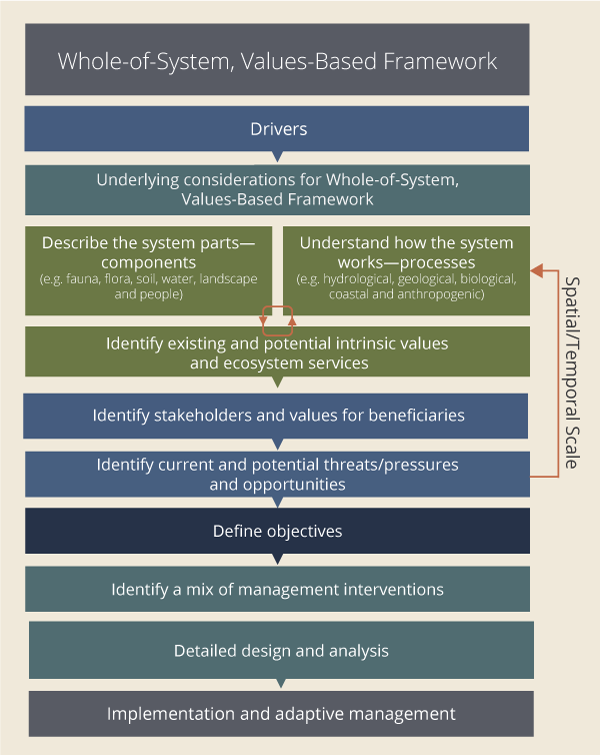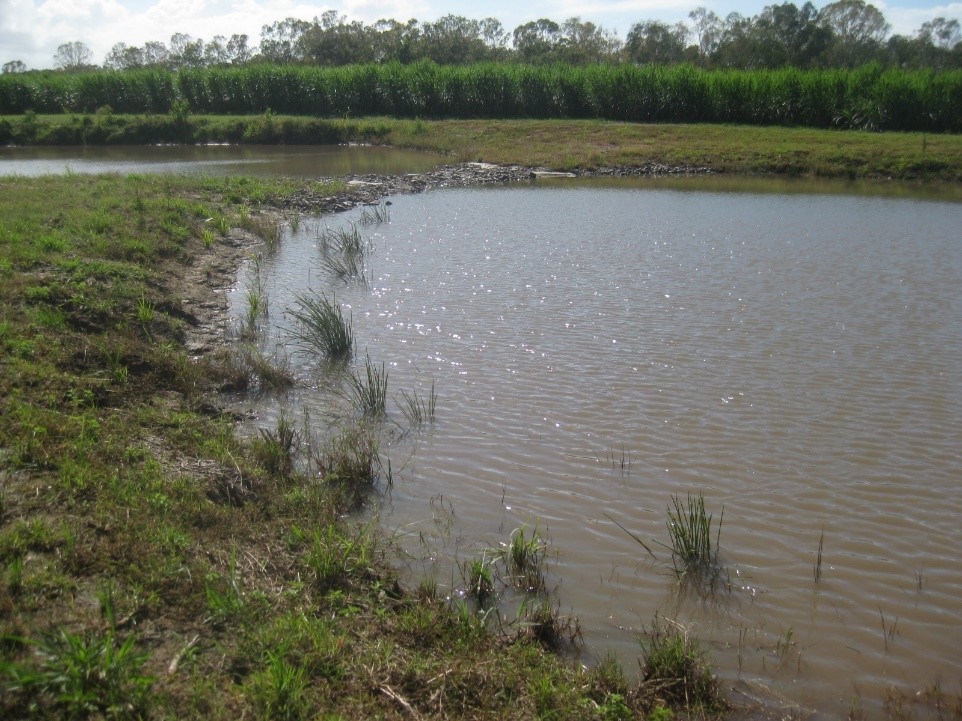|
|
Understand whole-of-systemThe whole-of-system refers to the site or land unit, the farm, the sub-catchment and sometimes the broader catchment. A good understanding of this system is essential for developing an effective treatment train or treatment system to improve water quality, by ensuring:
Treatment systems for agriculture – Understand whole-of-systemSelect from the tabs below The Whole-of-System, Values-Based Framework (the Framework) involves identifying the components (e.g. soil, vegetation), and processes (e.g. water regime, nutrient processes) and how these give rise to the ecosystem services (e.g. clean water and healthy environments) that are valued by different people (stakeholders, beneficiaries). Developing this understanding will help define desired outcomes and objectives and in turn identify suitable management interventions. These components and processes should be assessed and considered at the site (land unit) and sub-catchment scales when planning a treatment train or treatment system for water quality improvement:
A table of links to information is provided to help in gathering relevant information on your location and sub-catchment. Tips and tricks: Conducting a farm visit with the land owner or farm manager helps to identify the water regime, soils, existing water quality, production areas and issues, and importantly the land owner objectives. Visiting the farm with the owner or manager is the best way to identify potential sites for treatment systems. DisclaimerIn addition to the standard disclaimer located at the bottom of the page, please note the content presented is based on published knowledge of treatment systems. Many of the treatment systems described have not been trialled in different regions or land uses in Queensland. The information will be updated as new trials are conducted and monitored. If you have any additional information on treatment systems or suggestions for additional technologies contact us via the feedback link at the bottom of the page. Additional InformationWetland Technical Design Guideline Last updated: 28 June 2022 This page should be cited as: Department of Environment, Science and Innovation, Queensland (2022) Treatment systems for agriculture – Understand whole-of-system, WetlandInfo website, accessed 8 May 2025. Available at: https://wetlandinfo.des.qld.gov.au/wetlands/management/treatment-systems/for-agriculture/understand-system.html |

 — Department of the Environment, Tourism, Science and Innovation
— Department of the Environment, Tourism, Science and Innovation



